
At Wortzel Integrative Dental Care, we love to celebrate the holidays with vigor! Dr. Robert Wortzel would love to share some unique ways of celebrating Thanksgiving from beyond the Mountainside, NJ area to the national level!
When Americans sit down to dinner on the last Thursday of November, the day that Abraham Lincoln designated as the day on which Thanksgiving would be celebrated, they do so thinking that the first Thanksgiving feast was held at Plymouth in 1621. According to National Geographic, the Spanish explorer Francisco Vásquez Coronado and his men celebrated a feast of Thanksgiving in Texas in 1541, giving Texas the distinction of being the first place where Thanksgiving was celebrated.
Different Types of Celebrations
Native Americans had rituals around which they celebrated in hopes of ensuring a bountiful harvest. The Cherokees had a Green Corn Dance that they did for this very purpose. The Pilgrims (not to be confused with the Puritans,) rejected any type of public religious display. They held a three-day long non-religious Thanksgiving feast. Although they said grace, the focus of their celebration was on feasting, drinking alcohol (they did have beer,) and playing games.
The Pilgrims at the Plymouth Plantation celebrated a different day of Thanksgiving in 1623. Plagued by a crop-destroying drought, the settlers prayed for relief. They even fasted. A few days later, they got the rain they so desperately needed. Soon thereafter, they received another blessing when Captain Miles Standish came with staples they couldn't otherwise get. He also told them that a Dutch supply ship was en route. In gratitude for the abundance of good fortune, the Plymouth settlers celebrated a day of prayer and Thanksgiving on June 30, 1623.
The Story of Squanto
No discussion of Thanksgiving is complete without a discussion of Squanto, or Tisquantum, as he was known among his people, the Patuxet Indians. It is believed that he was born sometime around 1580. As he returned to his village after a long journey, he and several other Native Americans were kidnapped by Jamestown colonist, Thomas Hunt. Hunt put them on a ship heading to Spain where they were to be sold into slavery.
As fate would have it, some local friars rescued him and many of the other kidnapped natives. Squanto was educated by the friars. Eventually, after asking for freedom so he could return to North America, he ended up in London where he spent time working as a ship builder. By 1619, he was finally able to get passage on a ship headed to New England with other Pilgrims.
Upon arriving at Plymouth Rock, he learned that his entire tribe was wiped out by diseases that accompanied earlier settlers from Europe. In gratitude for passage on their ship, he helped them set up a settlement on the very land where his people once lived. They called the settlement Plymouth. Since they knew nothing about how to survive, let alone how to find food, Squanto taught them everything, from how to plant corn and other crops, how to fertilize them, how and where to get fish and eels and much more.
After a devastating winter during which many settlers died, thanks to Squanto's teaching, they had an abundant harvest. After that harvest, they honored him with a feast. It is this feast of 1621 which was celebrated between the Pilgrims and Wampanoag Indians that is widely considered the first Thanksgiving celebration.
About the Meal of the Plymouth Settlers
Surviving journals of Edward Winslow that are housed at Plymouth Plantation indicate that the first Thanksgiving feast was nothing like what Americans eat today. The meal consisted of venison, various types of wild fowl (including wild turkey,) and Indian corn. There were no cranberries, stuffing, pumpkin pie, potatoes, or any of the other “traditional” foods that appear on modern menus.
Today, Thanksgiving is celebrated on the fourth Thursday of November, the day that Abraham Lincoln designated as the holiday. It is still a day of feasting, and for some, a day of prayer and thanksgiving. For others, it is a celebration of gathering, especially for families. Still others may celebrate in entirely different ways, including watching college football bowl games, or by playing family games.
If you ever wonder why you're so tired after the Thanksgiving meal, it's because turkey contains an amino acid, tryptophan, and it sets off chemicals whose chain reaction combine to make people sleepy.




























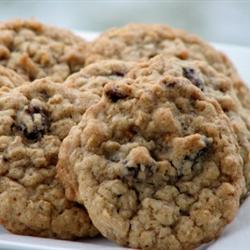 Ingredients: Makes 12-24 cookies
Ingredients: Makes 12-24 cookies Ingredients
Ingredients Ingredients
Ingredients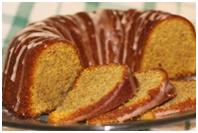 Ingredients
Ingredients

 On May 20, 2013, our daughter, Lisa graduated from New Jersey Dental School. It was one of my proudest moments as a father and as a dentist to have had the honor to place her graduation hood, officially welcoming her into my profession of 35 years.
On May 20, 2013, our daughter, Lisa graduated from New Jersey Dental School. It was one of my proudest moments as a father and as a dentist to have had the honor to place her graduation hood, officially welcoming her into my profession of 35 years. Here's a wonderful recipe from Linda McCartney's Vegetarian Home Cooking cookbook.
Here's a wonderful recipe from Linda McCartney's Vegetarian Home Cooking cookbook.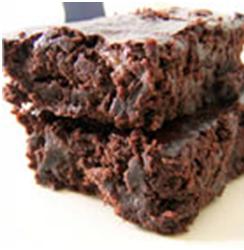 Want a delicious, vegan treat for your next family gathering? How about this recipe for vegan brownies from your friends at Integrative Dental Care.
Want a delicious, vegan treat for your next family gathering? How about this recipe for vegan brownies from your friends at Integrative Dental Care.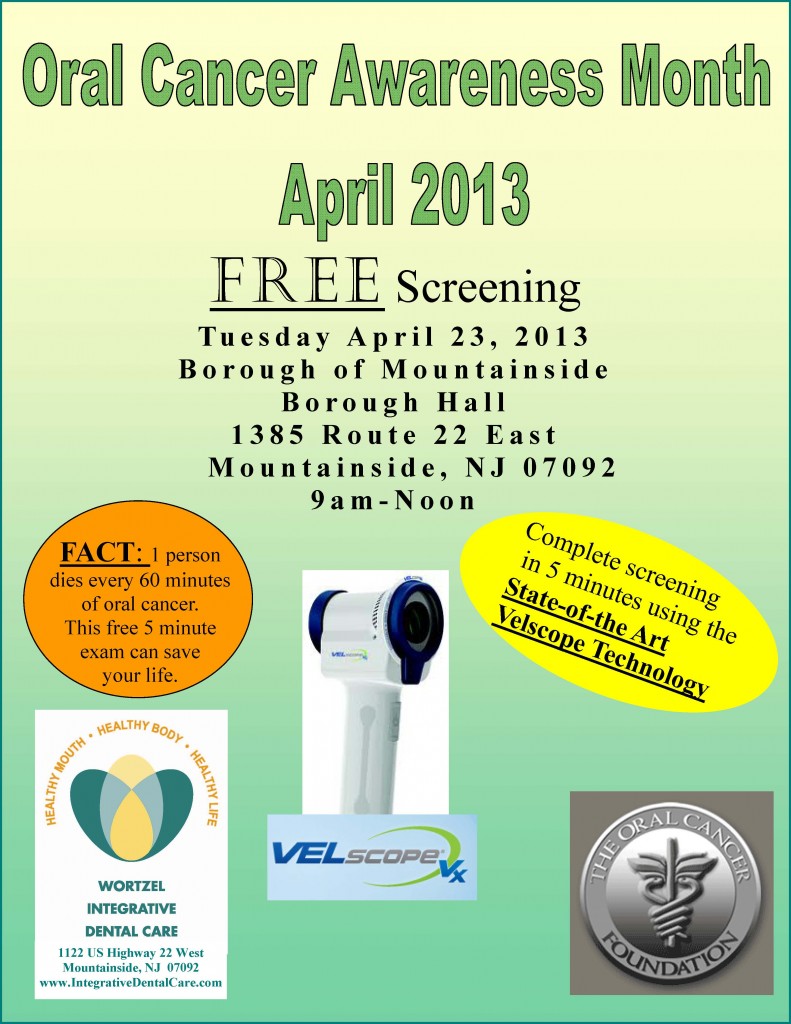
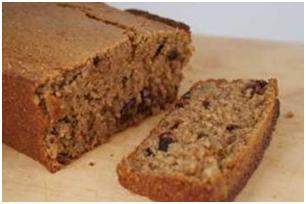

 Ingredients: Makes 16
Ingredients: Makes 16 This week we are sharing our recipe for some delicious chickpea crabcakes! What are your favorite healthy eating recipes? Be sure to share them with us on
This week we are sharing our recipe for some delicious chickpea crabcakes! What are your favorite healthy eating recipes? Be sure to share them with us on  At
At 
 Perhaps you don't even know you grind your teeth. Maybe a spouse or loved one woke you up in the middle of the night and made you aware of what was happening.
Perhaps you don't even know you grind your teeth. Maybe a spouse or loved one woke you up in the middle of the night and made you aware of what was happening. Dr. Robert Wortzel and the team from Integrative Dental Care want to inform you that our office is currently without power. We are fortunate to have weathered the storm safely and hope that you and your family are safe as well.
Dr. Robert Wortzel and the team from Integrative Dental Care want to inform you that our office is currently without power. We are fortunate to have weathered the storm safely and hope that you and your family are safe as well. Snoring may not be something you take seriously. You might even laugh or joke about it. But the fact is, anytime you or your partner snore to the point of waking, it could be a sign of serious health problems.
Snoring may not be something you take seriously. You might even laugh or joke about it. But the fact is, anytime you or your partner snore to the point of waking, it could be a sign of serious health problems. If you suffer from dental anxiety, a visit to our office might seem like a daunting prospect. Perhaps you had a bad experience in the past, but whatever the reason, please know that at our office, there is nothing to be afraid of. We understand you may be anxious about receiving dental treatments, and we’re here to help you have a comfortable, pain-free experience that will put your fears to rest.
If you suffer from dental anxiety, a visit to our office might seem like a daunting prospect. Perhaps you had a bad experience in the past, but whatever the reason, please know that at our office, there is nothing to be afraid of. We understand you may be anxious about receiving dental treatments, and we’re here to help you have a comfortable, pain-free experience that will put your fears to rest. Many people who are careful about brushing and flossing their teeth wonder how they still end up with cavities or tooth decay. Several factors affect wear and tear on tooth enamel. Diet is a major factor, with certain foods increasing the likelihood that your enamel will become discolored or decayed. Pay close attention to the foods you eat to keep your pearly whites looking healthy and clean.
Many people who are careful about brushing and flossing their teeth wonder how they still end up with cavities or tooth decay. Several factors affect wear and tear on tooth enamel. Diet is a major factor, with certain foods increasing the likelihood that your enamel will become discolored or decayed. Pay close attention to the foods you eat to keep your pearly whites looking healthy and clean. You may not understand it, and the more you think about it the less you want to believe it, but you’re positive you have a cavity, and a painful one, too. How did this happen? You brush twice a day and floss regularly. You rinse with hydrogen peroxide, just like the dentist recommended. In fact, you can’t remember the last time you had a cavity, but you think it was when you were a little kid, back when you ate sugary cereals like Lucky Charms and Cocoa Puffs for breakfast. In all seriousness, you thought only kids got cavities. Weren’t you supposed to have outgrown these things the way teenagers outgrow acne?
You may not understand it, and the more you think about it the less you want to believe it, but you’re positive you have a cavity, and a painful one, too. How did this happen? You brush twice a day and floss regularly. You rinse with hydrogen peroxide, just like the dentist recommended. In fact, you can’t remember the last time you had a cavity, but you think it was when you were a little kid, back when you ate sugary cereals like Lucky Charms and Cocoa Puffs for breakfast. In all seriousness, you thought only kids got cavities. Weren’t you supposed to have outgrown these things the way teenagers outgrow acne? Bad breath, also called halitosis, can result from poor dental health habits and may be a sign of other health problems. Bad breath can also be made worse by the types of foods you eat and other unhealthy lifestyle habits. You may not even be aware of your own bad breath, so if you’re concerned you may be suffering from it, give us a call. We can help identify the cause and, if it’s due to an oral condition, develop a treatment plan to treat it.
Bad breath, also called halitosis, can result from poor dental health habits and may be a sign of other health problems. Bad breath can also be made worse by the types of foods you eat and other unhealthy lifestyle habits. You may not even be aware of your own bad breath, so if you’re concerned you may be suffering from it, give us a call. We can help identify the cause and, if it’s due to an oral condition, develop a treatment plan to treat it. Now that many of the schools are back in session, we would like to remind all of our patients about the importance of scheduling appointments in advance. With school, clubs, sports and family duties to consider, we know that it can be challenging to find time this fall.
Now that many of the schools are back in session, we would like to remind all of our patients about the importance of scheduling appointments in advance. With school, clubs, sports and family duties to consider, we know that it can be challenging to find time this fall.



 Gingivitis is a type of periodontal disease in which only your gums are affected. Gingivitis, according to the American Dental Association (ADA), is a milder and often reversible type of periodontal disease. However, it can lead to periodontitis -- a more destructive and serious disease -- if proper professional treatment and home care aren't put into place. No tissue damage or irreversible bone damage is present in the gingivitis stage of periodontal disease.
Gingivitis is a type of periodontal disease in which only your gums are affected. Gingivitis, according to the American Dental Association (ADA), is a milder and often reversible type of periodontal disease. However, it can lead to periodontitis -- a more destructive and serious disease -- if proper professional treatment and home care aren't put into place. No tissue damage or irreversible bone damage is present in the gingivitis stage of periodontal disease. Brushing your teeth every day keeps them cleaner, improves your breath, and reduces plaque buildup. But did you know that there may be a connection between your dental health and chronic illness? Some scientific evidence suggests that poor dental health may be linked to cardiovascular disease. Although more research is needed to explore this association, it provides yet another reason to brush your teeth twice per day, floss daily, and visit your dentist regularly.
Brushing your teeth every day keeps them cleaner, improves your breath, and reduces plaque buildup. But did you know that there may be a connection between your dental health and chronic illness? Some scientific evidence suggests that poor dental health may be linked to cardiovascular disease. Although more research is needed to explore this association, it provides yet another reason to brush your teeth twice per day, floss daily, and visit your dentist regularly.



 If you have missing teeth, it is crucial to replace them. Without all your teeth, chewing and eating can destabilize your bite and cause you discomfort. Dental implants are a great option for replacing missing or badly diseased teeth. A dental implant offers comfort, support, stability, and is as close to a natural tooth that a restoration can be.
If you have missing teeth, it is crucial to replace them. Without all your teeth, chewing and eating can destabilize your bite and cause you discomfort. Dental implants are a great option for replacing missing or badly diseased teeth. A dental implant offers comfort, support, stability, and is as close to a natural tooth that a restoration can be. Bad breath, also called halitosis, can result from poor dental health habits and may be a sign of other health problems. Bad breath can also be made worse by the types of foods you eat and other unhealthy lifestyle habits. You may not even be aware of your own bad breath, so if you’re concerned you may be suffering from it, talk to our team. We can help identify the cause and, if it’s due to an oral condition, develop a treatment plan to treat it.
Bad breath, also called halitosis, can result from poor dental health habits and may be a sign of other health problems. Bad breath can also be made worse by the types of foods you eat and other unhealthy lifestyle habits. You may not even be aware of your own bad breath, so if you’re concerned you may be suffering from it, talk to our team. We can help identify the cause and, if it’s due to an oral condition, develop a treatment plan to treat it. In honor of June Dairy Month, our team would like to thank all of our hard working families in the Dairy Industry. You make us proud!
In honor of June Dairy Month, our team would like to thank all of our hard working families in the Dairy Industry. You make us proud! One word nobody wants to hear when they visit the dentist is Cavity! That’s right, the dreaded cavity; but what exactly is a cavity and how do you get one? A cavity is a hole that develops in a tooth when the tooth begins to decay. It’s important to get a cavity filled as soon as it’s detected so that it does not grow bigger.
One word nobody wants to hear when they visit the dentist is Cavity! That’s right, the dreaded cavity; but what exactly is a cavity and how do you get one? A cavity is a hole that develops in a tooth when the tooth begins to decay. It’s important to get a cavity filled as soon as it’s detected so that it does not grow bigger. Memorial Day weekend, a time to remember and honor the men and women lost while serving for our country. Memorial Day is also the unofficial start of summer, and for many folks getting out of town for three days after being cooped up in the classroom or the office spells sweet, sweet relief.
Memorial Day weekend, a time to remember and honor the men and women lost while serving for our country. Memorial Day is also the unofficial start of summer, and for many folks getting out of town for three days after being cooped up in the classroom or the office spells sweet, sweet relief. Thanks for the question. Your first visit typically includes an x-ray that allows us to view the structure of the jaw, the position of any teeth that have not yet erupted, malformed roots, and tooth decay.
Thanks for the question. Your first visit typically includes an x-ray that allows us to view the structure of the jaw, the position of any teeth that have not yet erupted, malformed roots, and tooth decay.